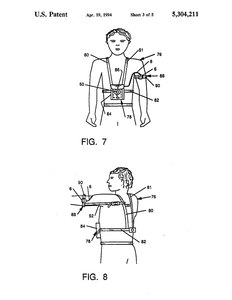| This article needs additional citations for verification. Please help improve this article by adding citations to reliable sources. Unsourced material may be challenged and removed. Find sources: "Aversives" – news · newspapers · books · scholar · JSTOR (August 2011) (Learn how and when to remove this message) |

In psychology, aversives are unpleasant stimuli that induce changes in behavior via negative reinforcement or positive punishment. By applying an aversive immediately before or after a behavior, the likelihood of the target behavior occurring in the future may be reduced. Aversives can vary from being slightly unpleasant or irritating to physically, psychologically and/or emotionally damaging.
Types of stimuli
Main article: Classical conditioningThere are two types of aversive stimuli:
Unconditioned
Unconditioned aversive stimuli naturally result in pain or discomfort and are often associated with biologically harmful or damaging substances or events. Examples include extreme heat or cold, bitter flavors, electric shocks, loud noises and pain. Aversives can be applied naturally (such as touching a hot stove) or in a contrived manner (such as during torture or behavior modification).
Conditioned
A conditioned aversive stimulus is an initially neutral stimulus that becomes aversive after repeated pairing with an unconditioned aversive stimulus. This type of stimulus would include consequences such as verbal warnings, gestures or even the sight of an individual who is disliked.
Use in applied behavior analysis (ABA)
Main articles: Operant conditioning and Ethical challenges to autism treatment
Aversives may be used as punishment or negative reinforcement during applied behavior analysis. In early years, the use of aversives was represented as a less restrictive alternative to the methods used in mental institutions such as shock treatment, hydrotherapy, straitjacketing and frontal lobotomies. Early iterations of the Lovaas technique incorporated aversives, though Lovaas later abandoned their use. Over time the use of aversives has become less common, though they are still in use as of 2021.
Several national and international disability rights groups have spoken against the use of aversive therapies, including TASH and the Autism National Committee (known as AUTCOM). Although it has generally fallen out of favor, at least one institution continues to use electric shocks on the skin as an aversive. A ruling in 2018 supported its continued use. The FDA has made a commitment to ban its use, but as of January 2019 has not yet done so.
A report from the Food and Drug Administration found that "the literature contains reports that when health care providers have resorted to punishers... the addition of punishers proved no more successful than -only techniques... Reflecting this trend, a 2008 survey of members of the Association for Behavior Analysis found that providers generally view punishment procedures as having more negative side effects and being less successful than reinforcement procedures." The Behavior Analyst Certification Board has stated their support the use of aversives on children with consent by a parent or guardian.
Opposition
The use of aversives in applied behavior analysis is opposed by many advocacy groups for people with disabilities. These include:
- Autistic Self Advocacy Network
- Arc of the United States
- Aspies For Freedom
- Autism Network International
See also
References
- Allen KW (March 1996). "Chronic nailbiting: a controlled comparison of competing response and mild aversion treatments". Behav Res Ther. 34 (3): 269–72. doi:10.1016/0005-7967(95)00078-X. PMID 8881096.
- Moser, Dan (1965). "Screams, Slaps & Love: A surprising, shocking treatment helps far-gone mental cripples". Life Magazine.
- Interverbal: Reviews of Autism Statements and Research: A Less Punishing World: Contradictions in Behavior Analysis, Autism, and Punishment
- Lerman DC, Vorndran CM (2002). "On the status of knowledge for using punishment implications for treating behavior disorders" (PDF). J Appl Behav Anal. 35 (4): 431–64. doi:10.1901/jaba.2002.35-431. PMC 1284409. PMID 12555918. Archived from the original (PDF) on 2007-01-01.
- Pilkington, Ed (2018-11-16). "'It's torture': critics step up bid to stop US school using electric shocks on children". The Guardian. ISSN 0261-3077. Retrieved 2019-04-07.
- Beaudet, Mike (2018-06-28). "Judge sides with school that uses electric shocks on its students". WCVB. Retrieved 2019-04-07.
- "School Shocks Students With Disabilities. The FDA Is Moving To Ban The Practice". NPR. January 23, 2019. Retrieved 2019-04-07.
- "Banned Devices; Proposal To Ban Electrical Stimulation Devices Used To Treat Self-Injurious or Aggressive Behavior". Federal Register. 2016-04-25. Retrieved 2020-08-08.
- Behavior Analyst Certification Board, Guidelines for Responsible Conduct for Behavior Analysts, p. 8,
The behavior analyst must obtain the client's or client-surrogate's approval in writing of the behavior assessment procedures before implementing them. As used here, client-surrogate refers to someone legally empowered to make decisions for the person(s) whose behavior the program is intended to change; examples of client-surrogates include parents of minors, guardians, and legally designated representatives
- Behavior Analyst Certification Board, Guidelines for Responsible Conduct for Behavior Analysts, p. 9,
respects the right of the client to terminate services at any time